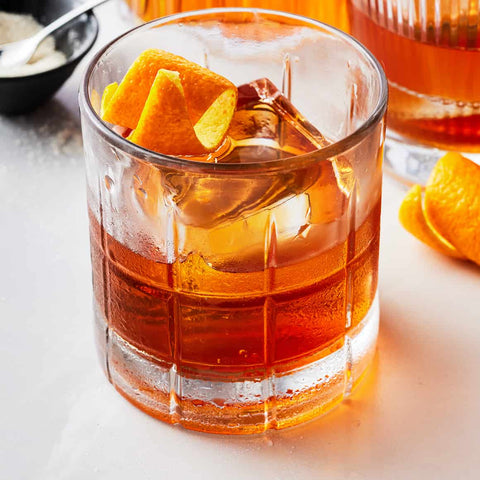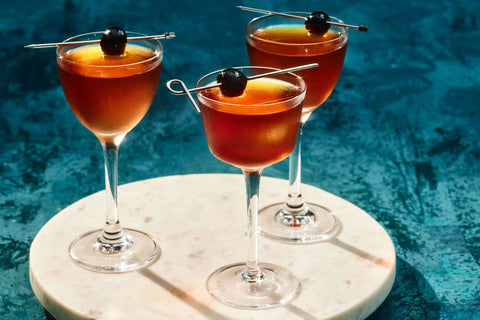The World's Best Cocktails: The Negroni
Introduction
The Negroni stands as one of the most perfectly balanced cocktails in existence. This Italian classic, with its equal parts formula of gin, sweet vermouth, and Campari, offers a masterclass in bitter-sweet harmony.
Historical Origins
Born in Florence, Italy, in 1919, the Negroni was created at Caffè Casoni (later Caffè Giacosa) when Count Camillo Negroni requested his favorite cocktail, the Americano, be strengthened by replacing the soda water with gin. The bartender, Fosco Scarselli, added an orange garnish instead of the Americano's lemon to differentiate the drinks.
The Classic Recipe
Traditional Negroni
- 30ml London Dry gin
- 30ml sweet vermouth
- 30ml Campari
- Garnish: Orange slice or peel
- Method: Stirred, served over ice or up
Key Elements
- Equal parts ratio
- Quality of ingredients
- Proper dilution
- Temperature control
- Fresh garnish
Component Analysis
Gin Selection
- Traditional: London Dry
- Modern options: Plymouth, craft gins
- Higher proof preferred
- Juniper-forward works best
Vermouth Considerations
- Italian sweet vermouth traditional
- Freshness essential
- Storage important
- Quality matters significantly
Campari's Role
- Non-negotiable component
- Bitter backbone
- Color contribution
- Historic significance
Technical Preparation
Stirring Technique
- Fill mixing glass with ice
- Add all ingredients
- Stir 30-40 rotations
- Strain over fresh ice or up
- Garnish appropriately
Service Styles
- Over ice (rocks)
- Straight up (coup/nick & nora)
- Large cube
- Multiple small cubes
Modern Variations
White Negroni
- Gin
- Lillet Blanc/Cocchi Americano
- Suze/gentian liqueur
- Modern classic status
Boulevardier
- Bourbon/rye instead of gin
- Richer, warmer profile
- American adaptation
- Historic variation
Sbagliato
- Prosecco replaces gin
- Lighter style
- "Mistaken" Negroni
- Italian favorite
Expert Techniques
Temperature Control
- Chilled glassware
- Quality ice
- Proper stirring
- Quick service
Garnish Preparation
- Fresh orange essential
- Proper peeling technique
- Oil expression
- Placement in glass
Service Standards
Glassware Options
- Old Fashioned glass
- Coupe
- Nick & Nora
- Rocks glass
Ice Considerations
- Large single cube
- Multiple cubes
- Clear ice preferred
- Proper dilution rate
Cultural Impact
Italian Aperitivo Culture
- Pre-dinner tradition
- Social importance
- Bitter appreciation
- Food pairing
Global Influence
- Craft cocktail revival
- Bitter cocktail trend
- Vermouth renaissance
- Modern variations
Professional Insights
Bartender Tips
- Maintain vermouth freshness
- Quality ice essential
- Proper dilution key
- Temperature control
- Fresh garnish always
Common Mistakes
- Old vermouth
- Over-dilution
- Poor quality ice
- Warm service
- Wrong proportions
Food Pairings
Traditional
- Olives
- Salumi
- Hard cheese
- Nuts
- Citrus-based snacks
Modern Suggestions
- Charcuterie
- Dark chocolate
- Aged cheese
- Light appetizers
- Seafood
Home Bartending
Essential Tools
- Mixing glass
- Bar spoon
- Strainer
- Quality glassware
- Ice molds
Ingredients Storage
- Refrigerate vermouth
- Fresh oranges
- Quality ice
- Clean bottles
- Proper rotation
The Negroni Family
Related Cocktails
- Americano
- Boulevardier
- Old Pal
- Cardinale
- Sbagliato
Contemporary Adaptations
- Mezcal Negroni
- Rum Negroni
- Arctic Negroni (frozen)
- Aged Negroni
- Regional variations
Conclusion
The Negroni represents the perfect balance of bitter, sweet, and strong, embodying the Italian aperitivo tradition while remaining remarkably adaptable to modern interpretation. Its enduring popularity speaks to both its perfect proportions and its ability to satisfy evolving tastes in the cocktail world.




Comments (0)
There are no comments for this article. Be the first one to leave a message!